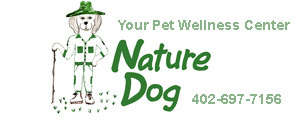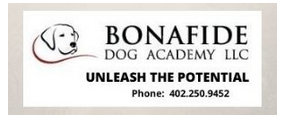- Do you subscribe to Dharma Dog Training’s Newsletter? You should.
- A Unique Campaign from The Humane Society of the United States
- Rabid bats in Omaha- Stay safe, prepared with these tips
- Springtime Activities in Omaha
- Mill Dog Monthly from Bailing Out Benji
- World Spay Day, Legislative Alert in Nebraska
- Attend the Nebraska Rescue Council’s monthly meeting this Saturday
- Five Hard-to-Ignore Reasons to Adopt!
- Paws in Pink to Benefit Breast Cancer Foundation
- VCA, Inc. Acquires MidWest Vet Specialists from Kansas State University
Thinking about Bones and Raw Food Diet for your cat? Do some homework.

A guest writer has weighed in on feeding pets a bones and raw food (BARF) diet. Read and do a little research yourself to decide whether this diet is right for you and your pets.
When it comes to finding good repair services and restaurants, not necessarily in that order, I’ve always regarded work of mouth endorsements as the best kind of referral. But I hadn’t as yet used the method for choosing pet food although I had become increasingly concerned about the quality of cat food, having watched helplessly for 40+ years as cat after cat I’d come to love, sooner or later, succumbed to cancer. Indoor cat, outdoor cat; this brand, that brand; plastic dish, metal dish, china dish; it didn’t seem to matter, one form of cancer or another eventually took each of them – the last one at the heartbreakingly young age of 5. So I’d narrowed it down to the quality of the food, and was only feeding Marcel and Marceau, my current roomies, black and white tuxedo brothers, “premium brands.”
Now while my sister-in-law’s sister had long been issuing unsolicited word-of-mouth referrals, extolling the virtues of the BARF (bones and raw food) diet she was feeding her itsy-bitsy poodle mixes, somehow I couldn’t see the brothers eating raw meat. Then the stars of the universe convened and I found myself inexplicitly drawn to my very first dog, Marcos, a rescued shepherd-mix who was said to be 8 (or 9?). Marcos graced my house with love, and eventually consented to being domesticated (bossed around) by the brothers. He was the ideal addition to our happy household – if you didn’t count the hour or so following his dinner each evening.
Tummy full, he’d retire to the bed in the spare room he’d appropriated on day one; a sanctuary Marcel and Marceau conceded to him. Ten, maybe fifteen minutes would pass before the dreaded sounds would issue forth, then, the odor wafting through the house would confirm that, once again, Marcos had gas. I switched foods, and while some worked for a week or two – the flatulence would return, sometimes accompanied by signs of discomfort. Fearing that he might eventually develop bloat, also known as gastric torsion, a fatal condition suffered by large barrel-chested dogs in which the stomach rotates and twists upon itself, I decided to explore a raw diet. Needless to say, I was delighted to discover that the brand of raw food my sister-in-law’s sister bought frozen was also available in a freeze-dried raw formula. I bought it, and gradually added it to Marcos’s diet until it totally replaced the canned food. His flatulence and discomfort decreased until it ceased to exist.
Although Marcos had always been an energetic dog despite his age, which by now was 10 (or 11?), he seemed to enjoy our daily 90-minute morning walks even more than when I’d first adopted him. When I brought him into the vet for his shots, Dr M commented on how good he looked, but when I praised the BARF diet, sounding incredibly like my sister’s sister-in-law, I could tell from his expression that he was not on board the BARF wagon. The presence of salmonella, listeria, and other contaminants was his chief concern, even after I explained that this was freeze-dried, not raw. So I decided to do some research on the benefits vs the perils of a raw food diet, and found that what was once considered a possibly dangerous fad was gaining acceptance. But while it was being debated in the veterinary world, by no means was it being endorsed by the mainstream.
Like Dr M, non-believers worried about bacteria, while believers countered that canned food is by no means blame-free in this regard. Others worried about low levels of calcium and phosphorous and low fat levels that can lead to anemia. Proponents noted that dogs on raw food had illustrious coats due to raw foods providing optimal natural fats, rather than rather than the unhealthy fats added to commercial canned food. All seemed to agree however, that most BARF diets are too rich in protein to be fed to older dogs in the early stages of liver or kidney disease or any age dog with pancreatitis. Since Marcos fell into none of these camps I kept on buying and he kept on eating. I also noticed that the debaters acknowledged that some brands were better than others and that indeed the number of raw food brands on the market was growing almost daily.
My research also led me to believe that cats respond just as well to BARF, if not better, which made sense since I could think of nothing t hat appeals to them more than a mouse or bird unfortunate enough to cross their paths. And Eureka, the same brand I fed Marcos came in a feline form. I couldn’t wait to try it, and when I gave it to them, again after a gradual acclimation, they couldn’t get enough. I noticed how sleek my two formerly fat (all right – borderline obese!) indoor cats were becoming; how their fur shimmered as they sunbathed on the dining room table, how the muscles that once were buried by fat stood out in perfect definition. And what amazed me most of all – they actually had waists!
Four years have passed and Marcos passed away at a ripe age of 14 (or 15?), and Marcel and Marceau are now 10 years old. Last spring proved to be monumental in that not only was I actually able to catch Marcel, but to deposit him in a cat carrier and secure it without his twisting free somewhere in the process. His propensity for resisting capture resulting in three years of last moment canceled appointments, had led Dr, M to christen him Houdini. When he extracted him from the carrier and put him on the scale, he marveled that Houdini had lost three pounds since his previous visit, then went on to meticulously palpated every millimeter of his body. I held my breath since too often over the years had such an examination led to his recommendation that “we do a biopsy on his lump.” When he was finally finished, he looked up at me with a very serious expression on his face. “I’ve got to tell you, this cat” …….and as he paused to shake his head in wonder, my heart paused as well…….. “is in freaking good condition.”
I couldn’t resist. “It’s the raw food diet.” I told him. He had no comment, but perhaps when I brought Marceau in, who had lost even more weight, and was in similar freaking good condition, he just may have been swayed. Or perhaps he wasn’t, both the American Veterinary Medical Association (AVMA) and the American Animal Hospital Association (AAHA) continue to council against BARF diets, at least on paper. So the best advice for animal guardians considering making a change to raw foods is to research carefully, discuss the matter with their vets, then proceed with caution in either direction. And this would appear to be similar to the advice DVM360.com, a respected veterinary magazine offers to veterinarians in a paper ending with this suggestion:
Clients who choose to feed their pets raw food diets have typically done much research on the benefits of these diets and are not interested in reverting to a conventional feeding style. As veterinarians we can help make certain that these clients are fully educated on the pros and cons of these diets, and focus on the need for safety precautions to ensure that both the pets and the people within these households remain safe and healthy.
Another great resource can be discovered from our friends at All About Cats here: https://www.wwwallaboutcats.com/making-cat-food-homemade
For more, read:
http://nolongerwild.
http://pets.webmd.com/dogs/guide/raw-dog-food-dietary-concerns-benefits-and-risks
http://pets.webmd.com/cats/guide/homemade-cat-food-and-raw-cat-food
Related Posts
Latest News
-
Join Us at Pick A Pooch 2025: A Fun-Filled Weekend for the Whole Family
A Fun-Filled Weekend for Pet Lovers and Families Alike Mark...
- Posted 1 year ago
- 0
-
Beardmore Presenting Sponsor At This Years Pick-A-Pooch event
🐾 We are thrilled to announce that Beardmore Subaru is...
- Posted 4 weeks ago
- 0
-
How Having A Pet Can Change Your Life
Having a pet can open your heart in ways that...
- Posted 2 months ago
- 0
-
How To Improve The Life Of Your Senior Pet
Do you have an elderly fur baby and want to...
- Posted 3 months ago
- 0
-
Springtime Activities To Enjoy With Your Furry Friends
Are you preparing for warmer weather and want some ideas...
- Posted 4 months ago
- 0
-
Pros And Cons Of Microchipping Your Pets
Have you considered whether your pets should be microchipped and...
- Posted 5 months ago
- 0
-
The Best New Fun Toys For Dogs And Cats
The Best New Fun Toys For Dogs And Cats Did...
- Posted 5 months ago
- 0
-
Heartfelt Ways To Show Your Pet You Love Them
Did you know there are more ways to show your...
- Posted 6 months ago
- 0























You must be logged in to post a comment Login